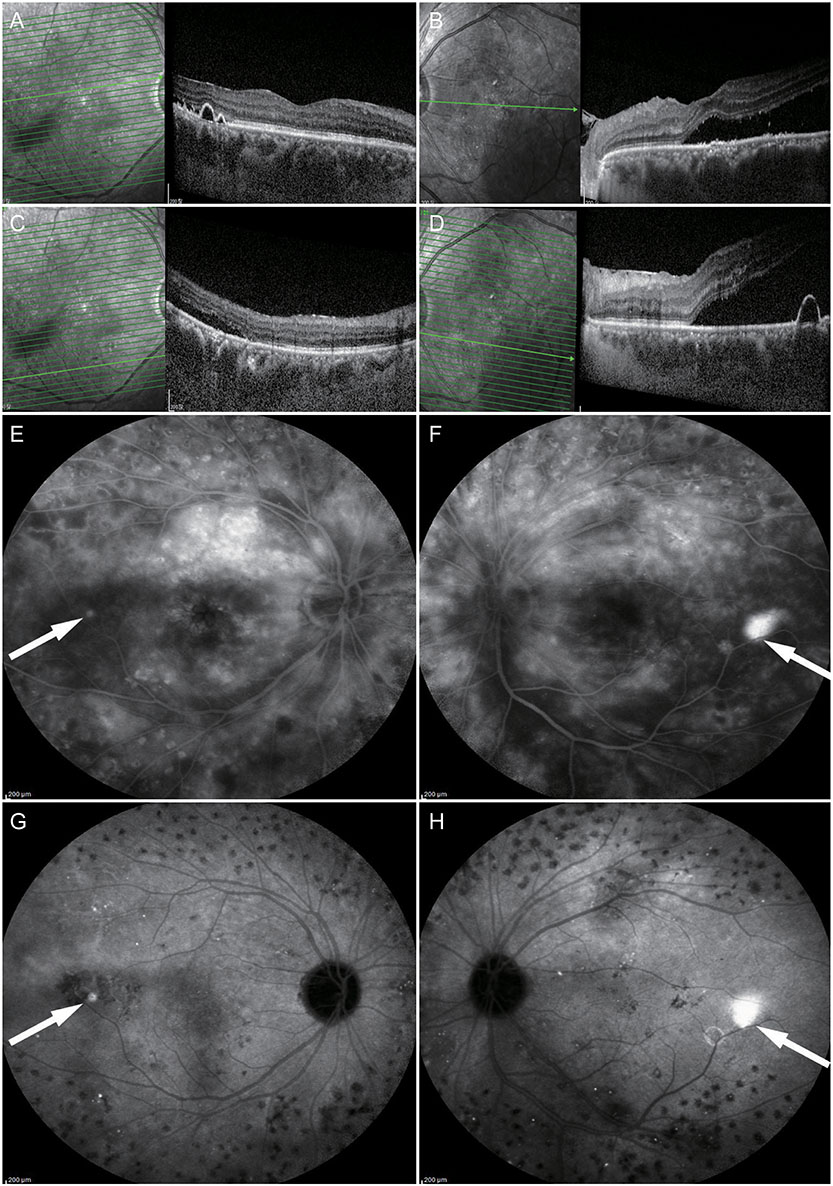Korean J Ophthalmol.
2019 Aug;33(4):392-394. 10.3341/kjo.2018.0115.
Central Serous Chorioretinopathy Following Intravitreal Dexamethasone Implant
- Affiliations
-
- 1Department of Ophthalmology, Kosin University College of Medicine, Busan, Korea. hiatus@kosin.ac.kr
- KMID: 2454783
- DOI: http://doi.org/10.3341/kjo.2018.0115
Abstract
- No abstract available.
Figure
Reference
-
1. Singer MA, Dugel PU, Fine HF, et al. Real-world assessment of dexamethasone intravitreal implant in DME: findings of the prospective, multicenter REINFORCE study. Ophthalmic Surg Lasers Imaging Retina. 2018; 49:425–435.
Article2. Eris E, Erdogan G, Perente I, et al. A new side effect of intravitreal dexamethasone implant (Ozurdex). Case Rep Ophthalmol Med. 2017; 2017:6369085.
Article3. Georgalas I, Petrou P, Pagoulatos D, et al. Central serous chorioretinopathy in the fellow eye as a complication of intravitreal dexamethasone implant for the treatment of Irvine-Gass syndrome. Clin Exp Optom. 2016; 99:601–603.
Article4. Chang-Lin JE, Attar M, Acheampong AA, et al. Pharmacokinetics and pharmacodynamics of a sustained-release dexamethasone intravitreal implant. Invest Ophthalmol Vis Sci. 2011; 52:80–86.
Article5. Han JM, Hwang JM, Kim JS, et al. Changes in choroidal thickness after systemic administration of high-dose corticosteroids: a pilot study. Invest Ophthalmol Vis Sci. 2014; 55:440–445.
Article
- Full Text Links
- Actions
-
Cited
- CITED
-
- Close
- Share
- Similar articles
-
- Laser-Induced Choroidal Neovascularization in Central Serous Chorioretinopathy: 4 Cases
- Comparison of Intravitreal Bevacizumab and Aflibercept Injections for Central Serous Chorioretinopathy
- The Short-term Effect of Intravitreal Bevacizumab for Treatment of Central Serous Chorioretinopathy
- A case of Atypical Central Serous Chorioretinopathy with Bullous Retinal Detachment
- Factors Influencing the Effect of the Intravitreal Bevacizumab Injection in Patients with Central Serous Chorioretinopathy


